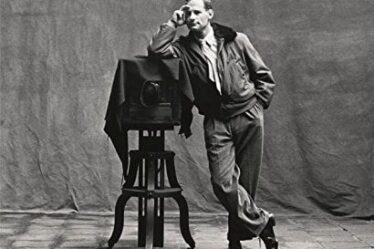
Procter & Gamble is betting on beauty.
The mammoth CPG conglomerate, which saw net sales of $76.1 billion in 2021, is best known as the owner of household brands, such as Charmin toilet paper, Bounty paper towels and Tide laundry detergent. But its most high-profile acquisition was in prestige skin care line Tula in January — following its acquisitions of another prestige skin care label, Farmacy, in November, and prestige hair care line, Ouai, in December.
The space isn’t unfamiliar territory for P&G. It’s owned Japanese skin care brand SK-II since 1991 and Olay since 1985, and also has a sizeable presence in mass-market hair care, with brands like Pantene and Herbal Essences. For the past 25 quarters, its beauty business has grown.
But the company’s beauty footprint is smaller than it used to be. In 2015, P&G offloaded 43 beauty brands, including CoverGirl and the fragrance licences for Hugo Boss and Gucci, to Coty in a $12.5 billion deal. At the time, it felt like P&G was taking a significant step away from beauty — particularly prestige.
Now, however, P&G is giving prestige beauty a second chance. Earlier this month, the company announced the launch of a new speciality beauty division that would house these recent additions, as well as SK-II’s North American business, skin care brands First Aid Beauty and Snowberry, and two brands it’s incubated in-house, skin care line See Me Beauty, which is focussed on appealing to women over the age of 50 and Keep It Anchored, a haircare brand focused on hair loss.
The stakes have changed since 2015. Beauty is a more crowded space, with competition not just from conglomerate-owned brands, but direct-to-consumer players, too. With countless buzzy indie players on the market, P&G’s competitors in both beauty and personal care have ramped up their acquisition activity. The pandemic has also recalibrated consumers’ beauty priorities, putting skin care at the forefront, even as colour cosmetics have been making a comeback from their pandemic lows.
“Beauty has proven to be a really stable place for investors to park their money because no matter what is going on in the outside world, people still invest in their beauty routine,” said Charlene Valledor, president of beauty incubator SOS Beauty. “The tremendous growth that we saw, even with the pandemic, just really provided that push and proof [P&G] needed.”
The Return
P&G is focusing its acquisitions on areas it’s maintained a presence: skin and hair care. It’s an expansion, rather than an entry into a completely new space. Given the current market conditions — the prestige category grew 30 percent in 2021, according to NPD — and the fact that P&G historically has had fewer holdings in prestige as well as direct-to-consumer, which is the predominant way Farmacy, Ouai and Tula sell.
“Haircare is … a good place for them to say ‘We’re already strong in hair, we want to continue to expand to different customers, or we want to grow with our existing customers who are growing up and they want to try new things,’” said Eurie Kim, managing partner at Forerunner Ventures.
Prestige is something of newer territory for P&G. Besides SK-II, its other prestige holdings are more recent additions to its portfolio: anti-aging brand Snowberry and First Aid Beauty, both of which it acquired in 2018, and Keep It Anchored, which it launched in the US in 2020.
“These acquisitions … are very consistent with P&G’s strategy of playing in categories where performance plays a major role in consumer brand choice,” said Chris Heiert, senior vice president of P&G’s speciality beauty group.
The benefits of playing in prestige come in reaching a consumer that’s willing to spend more, creating a consumer-brand relationship that’s ultimately more financially fruitful for the brand, said Deb Gabor, chief executive and co-founder of marketing firm Sol Marketing.
And the company is happy to let its acquisitions lead the way in the space they know best, “enabling them to operate independently with their current leadership and teams,” said Heiert. The new division, he added, will act as “a support network to help fuel the growth of these new brands,” giving them access to the conglomerate’s research and development teams, as well as its marketing efforts.
“When they acquire brands, they let those brands remain autonomous,” said Gabor. “The brands very much get to be their own brands.”
Can P&G Be the P&G of Beauty?
P&G will be competing with other CPG giants that have a head start in the prestige beauty businesses. Unilever launched its Prestige division in 2014 and acquired skin care brands Kate Somerville in 2015, Tatcha in 2019 and Paula’s Choice last year. In June, the consumer products giant described the unit as “one of the fastest-growing parts of our business.”
They’ll also have to take on beauty behemoths like Estée Lauder and L’Oréal, as well as independent digital-native brands, which are increasingly finding wide distribution at beauty speciality retailers such as Sephora and Ulta, plus big box stores like Target and Walmart.
The crowded market presents a challenge for P&G, which is used to dominating categories it enters, from Tide laundry detergent to Tampax tampons.
“If they’re not number one or two in the category, they leave,” said Reg Yarborough, the founder and president of consultancy The Consumer Products Group. “They’re either going to win and be a top brand or they’re going to exit.”
The company, which is the world’s largest advertiser, knows a thing or two about promoting brands. Marketing prestige beauty products is different from selling dish soap. After all, “these aren’t Super Bowl advertising brands that they have acquired,” said Gabor.
But P&G’s new brands have mass appeal that could be supported by a massive ad blitz, experts say. Ouai is the brainchild of Jen Atkin, a celebrity hairstylist with over four million Instagram followers, best known for her work with the Kardashians. Clean beauty label Farmacy and influencer favourite brand Tula sell at Sephora, with Tula at Ulta, as well. Heiert pointed not just to the brands’ loyal consumer bases, but also its relationships with those speciality retailers, as reasons for why they made sense in P&G’s portfolio.
“The brands that make the most sense are those that appeal to a wide audience,” Valledor said. “They might be prestige beauty, but they’re brands that proved to be widely appealing, not niche brands that are still very indie.”



